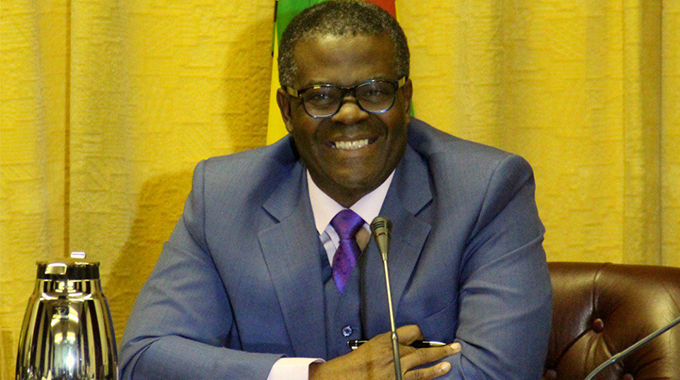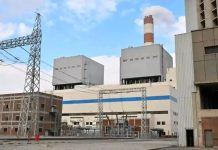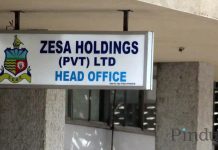THE Zimbabwe Electricity Supply Authority has stepped up load shedding to Stage 2 due to constant break downs at Hwange Thermal Power Station. The power utility is now prioritising supplies to the productive sectors of the economy — industry and farms, particularly those engaged in winter wheat farming. With Kariba Hydro power station currently operating at below capacity, Hwange has assumed greater importance to the nation but the power station is old and its machinery requires constant servicing to meet the power demands of the country. As of yesterday, Kariba was generating 240 megawatts of electricity while Hwange was at 389MW.
Of the smaller power stations, only Harare was generating 15MW bringing the total generation capacity of the entire country to 644 MW. Zimbabwe is getting 400MW from South Africa power utility Eskom and a further 50MW from Hydro Cahora Bassa of Mozambique. As things stand, the country is on approximately 1 094MW against national demand of 1 600MW. In its last update on Hwange, the Zimbabwe Power Company said Unit 5 returned to service last Saturday night, adding 160MW to the grid.
The company expected to see an improvement in power supply while Unit 6 was set to be opened up for inspections and fault diagnostics this week. This followed the recent payment of €490 000 for the inspection. Actual repair time was estimated at eight to 12 weeks and its return was expected to make a meaningful difference. Unit 6 will add a further 160MW to the grid, bringing up Hwange power production to 670MW.
On Friday, the Minister of Energy and Power Development, Advocate Fortune Chasi, said Unit 4 at Hwange started firing at 3PM on Thursday and was targeted to kick in at 9.30PM the same night. This would release 80MW beginning Friday morning and ease load shedding.
Over the course of the year, ZPC has had to curtail generation at Kariba South Power Station to try and maintain the recommended generation levels of 358MW at Kariba. Unit 6 at Hwange (the biggest unit) has been down due to a rotor earth fault, and generation was also constrained due to numerous forced outages and diesel stock outs which have delayed the unit’s return to service.
Cash flows remain a challenge for the company with current allocations inadequate to meet critical obligations. There are also coal supply challenges with suppliers failing to meet their delivery targets resulting in depleted stock levels. Against this background and attendant challenges with power supplies, it is clear that the country needs to adopt other ways of power generation as well as saving the little energy that it is generating.
The expansion of Hwange Power Station will be completed in 2022 while Kariba will only resume normal generation next year provided we have a normal to above normal rainy season. Government has embarked on a vision to have an upper middle income economy by 2030 and to achieve this feat, the country needs a stable and adequate supply of electricity.
Kariba South expansion and Hwange Thermal refurbishment offer a long term solution but these need to be augmented with drip feeds into the national grid by independent power producers, small solar plants and other smaller power stations like Harare, Bulawayo and Munyati. There is a need for uninterrupted power supplies, particularly to the manufacturing, mining and agriculture sectors if Zimbabwe is to achieve its economic objectives.
It is also very critical for Zesa to have a viable tariff to lure potential investors to increase power generation. The country therefore needs to interrogate the current tariff and continue to improve it so that Zesa can recoup sufficient revenue from consumers for it to improve its financial position and attract investment into the energy sector. Government recently approved a tariff increase, which now sees non-exporting businesses paying an average of 45c/kWh (approximately USc5/kWh) from 9,86c/kWh. Domestic consumers now pay an average of 27c/kWh (approximately USc3/kWh), which is subsidised, from an average of 9,86c/kWh.
This is not yet in line with regional trends and will obviously require further adjustment but in the interim, consumers need to pay what they owe to the power utility to enable it to continue discharging its mandate to the nation.
In this regard, we welcome the decision by Zesa to embark on a blitz to compel all high profile people who owe it in unpaid bills to pay up or face prosecution. Zesa is owed $1,2 billion by consumers and the bulk of this amount is owed by former and serving Ministers. Having been empowered by Minister Chasi to recover the money without fear or favour, Zesa should go all out to clamp down on defaulters.
A culture of impunity and freeloading is what has brought parastatals like Zesa to their knees. It cannot be business as usual with load shedding of up to 18 hours day. Everyone needs to pay for services rendered.






